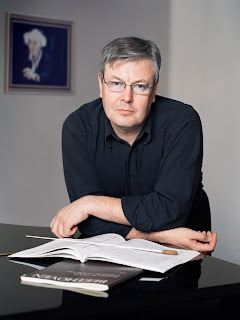National Theater, Estates Theater,
State Opera, Hybernia Theater
February 28 - March 15
It’s bonus time for opera-lovers, as the Czech Republic’s 10 major theaters showcase their best productions over the next two weeks in Prague. Starting with Martinů’s Miracles of Mary at the National Theater tonight, and concluding with the State Opera’s La traviata on March 15, the Opera 2011 festival will offer a tasty variety of titles and an opportunity to see fresh interpretations of works both famous and obscure.
Founded in 1993, the festival gives singers, directors and other artists working in the country’s regional theaters an opportunity to come to the capital city every two years and show what they can do. Like all performing arts ventures these days, Opera 2011 is pressed for funding – so much so that as recently as September, festival director Lenka Šaldová was considering canceling it.
“We were afraid we wouldn’t have enough money, so I was ready to drop it” she says. “But the National Theater said, don’t give up, we’ll let you use our theaters for not much money. And the Ministry of Culture told us that we’re one of the most important festivals in the Czech Republic.” The Ministry eventually backed that sentiment with about $1 million Kč in funds, and the City of Prague has also pledged support – although in classic City Hall fashion, it won’t say how much until the festival is over.
But ultimately, it wasn’t the money that tipped Šaldová’s decision.
“It was the message from the theaters about how important this festival is to them,” she says. “They’re all facing financial difficulties too, but they said, we really want to come and present our work. It’s a very prestigious event for them. So that gave us the motivation to go ahead.”
Ticket sales have been brisk, which Šaldová attributes to better advertising and marketing this year, though surely familiar titles such as Carmen, Otello and The Tales of Hoffmann have helped. On the lesser-known end of the scale, Dvořák’s seldom-staged Jakobín is on the program, as is Puccini’s second opera, Edgar, and an early Haydn work, Lo speziale (The apothecary).
This year’s festival also includes a strong interactive component. Audiences will be asked to rate all the performances, and the one that garners the highest score will win an award. There are Q&A sessions scheduled with directors and singers, and before every performance, either the conductor or director will introduce the production.
Unfortunately for foreigners, this will all be in Czech. The only English-language accommodation will be subtitles for Miracles of Mary and La traviata; otherwise, all the operas will be performed in their original language, with Czech subtitles only.
But this is certainly no barrier to enjoying a good night of opera. As Šaldová notes, “There was a time when people were reluctant to come to the festival, thinking maybe it wouldn’t be good. But now that they’ve seen it can be really good, they wait for it, and enjoy the chance to see new singers and new titles.”
With a little planning, so can you. Below are some of the recommended highlights, and a link to ticket information. But move fast, as many of the performances are nearly sold out.
Carmen (National Theater, Feb. 28) This production from the Moravian Theatre Olomouc is directed by Michael Tarant, who made a splash at earlier festivals with his versions of Dalibor, Simon Boccanegra and The Greek Passion. The talented Czech mezzo-soprano Barbora Polášková sings the title role.
Jakobín (Estates Theater, March 1) Magdalena Švecová, who did an impressive job with the National Theater’s most recent production of Smetana’s Prodaná nevěsta (The Bartered Bride), directs this tale of family turmoil and political intrigue from the J.K. Tyl Theater of Plzeň.
The Tales of Hoffmann (Estates Theater, March 2) Chinese tenor WeiLong Tao, who has been performing on European stages for the past 20 years, sings the lead role in this production from the North Bohemian Theatre of Ústí nad Labem, conducted by Miriam Němcová.
Otello (Estates Theater, March 3) Iron man Tao returns less than 24 hours later to take the lead role in Verdi’s fiery drama. This co-production of the South Bohemian Theater České Budějovice and Theater Passau also features German soprano Fréderique Friess as Desdemona.
Werther (Estates Theater, March 4) A first-class production from Ostrava’s Moravian-Silesian National Theatre, with Jiří Nekvasil directing, Robert Jindra conducting, and American tenor Steven Harrison and Slovak mezzo-soprano Zuzana Šveda leading a strong cast of singers.
The Apothecary (Hybernia Theater, March 14) Lékarník in Czech, Lo speziale in Italian – by any name, a modern take on a 1768 opera buffa by Joseph Haydn, from the National Theater Brno.
For full program details and ticket information: http://www.festival-opera.cz/homepage.html









